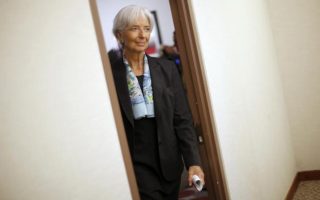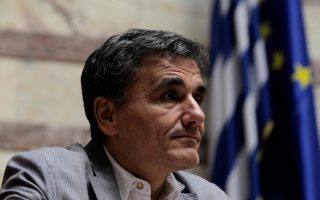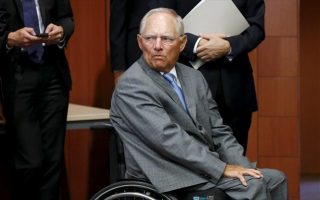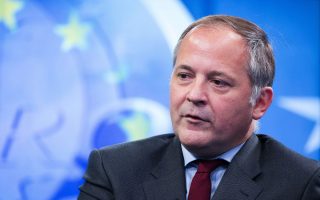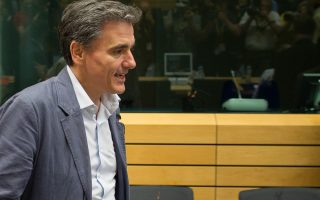Euro area outlook dims for economists as QE impact falls short
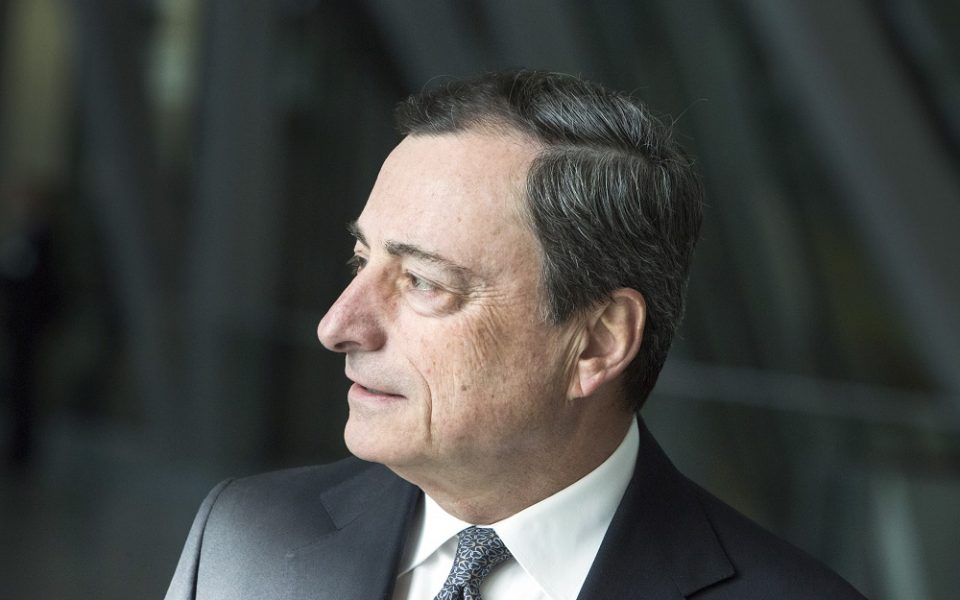
Mario Draghi’s trillion-euro boost for the euro area isn’t proving sufficient to lift economists’ confidence in the region’s recovery.
Barely a quarter of the respondents in a Bloomberg survey see the currency bloc’s outlook improving in the short term. That’s the lowest level since the European Central Bank started its stimulus program to buy 60 billion euros ($67 billion) a month of debt through September next year.
The ECB has brought record-low borrowing costs, a flood of cash and an export-boosting currency drop to the euro area, yet economic growth unexpectedly slowed last quarter. Central bank policy makers have already expressed disappointment over the pace of the recovery and pledged to do more if needed, leaving some economists debating whether they’ll act.
“The ECB may be forced to strengthen its language and, if insufficient, put its money where its mouth is,” said Elwin de Groot, a senior market economist at Rabobank International in Utrecht, Netherlands. “Let me stress that we haven’t reached that point just yet.”
In the survey, carried out before gross domestic product data for the euro area and its biggest economies were published on Friday, just 28 percent of respondents said the region’s outlook will improve in the short term. That’s down from 50 percent in July and 83 percent in March, when quantitative easing started. More than two-thirds of economists in the latest survey said the outlook will remain unchanged.
Missed estimates
That suggests an economy growing at a pace that leaves little room to absorb any external shocks, such as a worsening slowdown in China and any further turmoil over Greece.
Last week’s GDP figures showed the economy of the 19-nation currency bloc expanded 0.3 percent last quarter, down from 0.4 percent in each of the previous two quarters. Germany, France and Italy — the region’s biggest economies — all posted weaker-than-forecast numbers and French growth came to a halt for the first time in a year.
“External factors such as the cheap-oil boost, strong U.S. performance and the surge in sentiment following QE were all favorable and policy makers would have hoped for a second quarter of robust growth,” said Alasdair Cavalla, an economist at the Center for Economics and Business Research in London. “The remainder of the year promises a deterioration in global conditions, making it unlikely that we will see improvement in Europe’s current, lackluster growth rate.”
QE flexibility
ECB officials have already taken note. Governing Council members described the recovery as “disappointing” and said inflation is “unusually low” when they met in Frankfurt on July 15-16.
“Continued elevated uncertainty called for alertness and a readiness to respond,” the ECB said in a summary of the meeting published on Thursday. Governors agreed that “the design of the asset-purchase programs provided sufficient flexibility for them to be adapted if circumstances were to change and should the need arise,” it said.
While a Greek bailout deal may have eased concerns that the euro will fracture, headwinds include weaker demand and financial-market turbulence emanating from China. The country sent shock waves through global markets this month when it unexpectedly devalued the yuan. A renewed decline in oil prices also threatens to curb a euro-area inflation rate that only climbed back above zero in May.
Anemic growth
Economists see a one-in-three probability of another month of negative inflation this year, according to the median estimate in the Bloomberg survey. The ECB’s goal is for medium- term consumer-price growth of just under 2 percent.
Separate data suggest that the region’s recovery is still on track, according to Gero Jung, chief economist at Mirabaud Asset Management in Zurich.
“Growth momentum in the eurozone remains in place,” he said. “Output prices recovered notably in July, reaching their highest level since 2012. This implies that the inflation outlook is somewhat improving, but also signals positive momentum for European firms’ margins.”
Even so, the pace may yet prove too slow for policy makers keen to bring the euro area back to a more robust health.
“The ECB will continue to monitor developments — including lending rates, spreads and the expectations of the policy rate priced into the curve — and will act if that is felt necessary,” said David Owen, chief European financial economist at Jefferies International Ltd. in London. “Economic growth is still too anemic to assume anything else.”
[Bloomberg]
